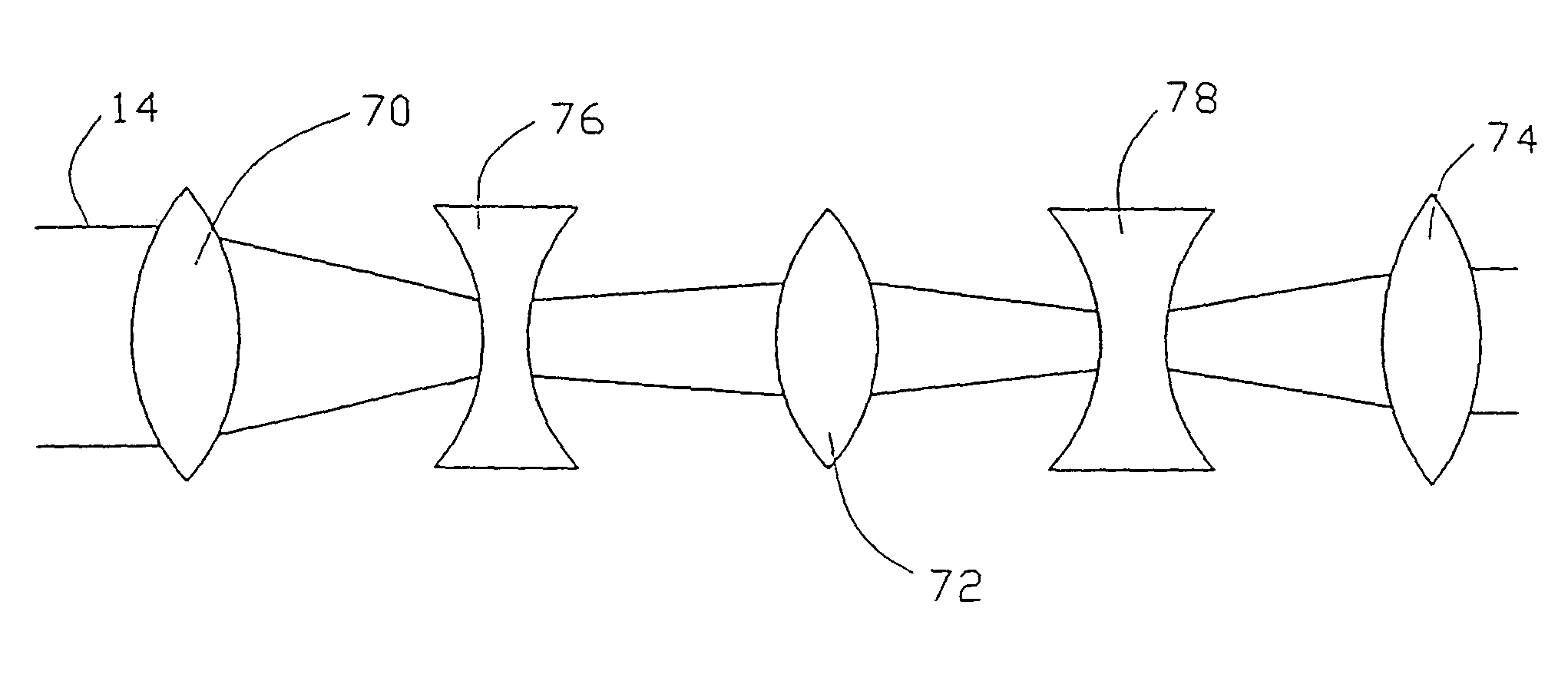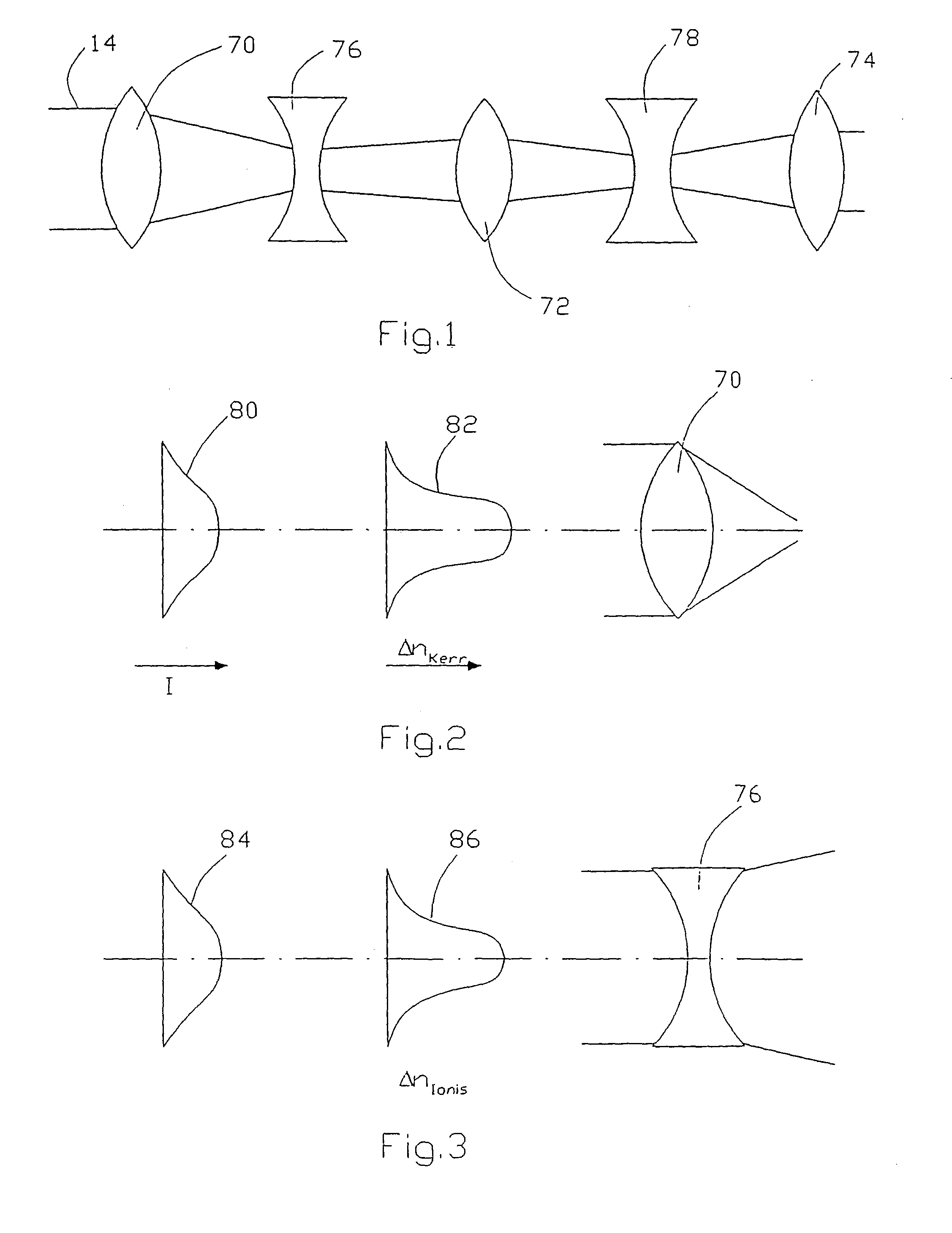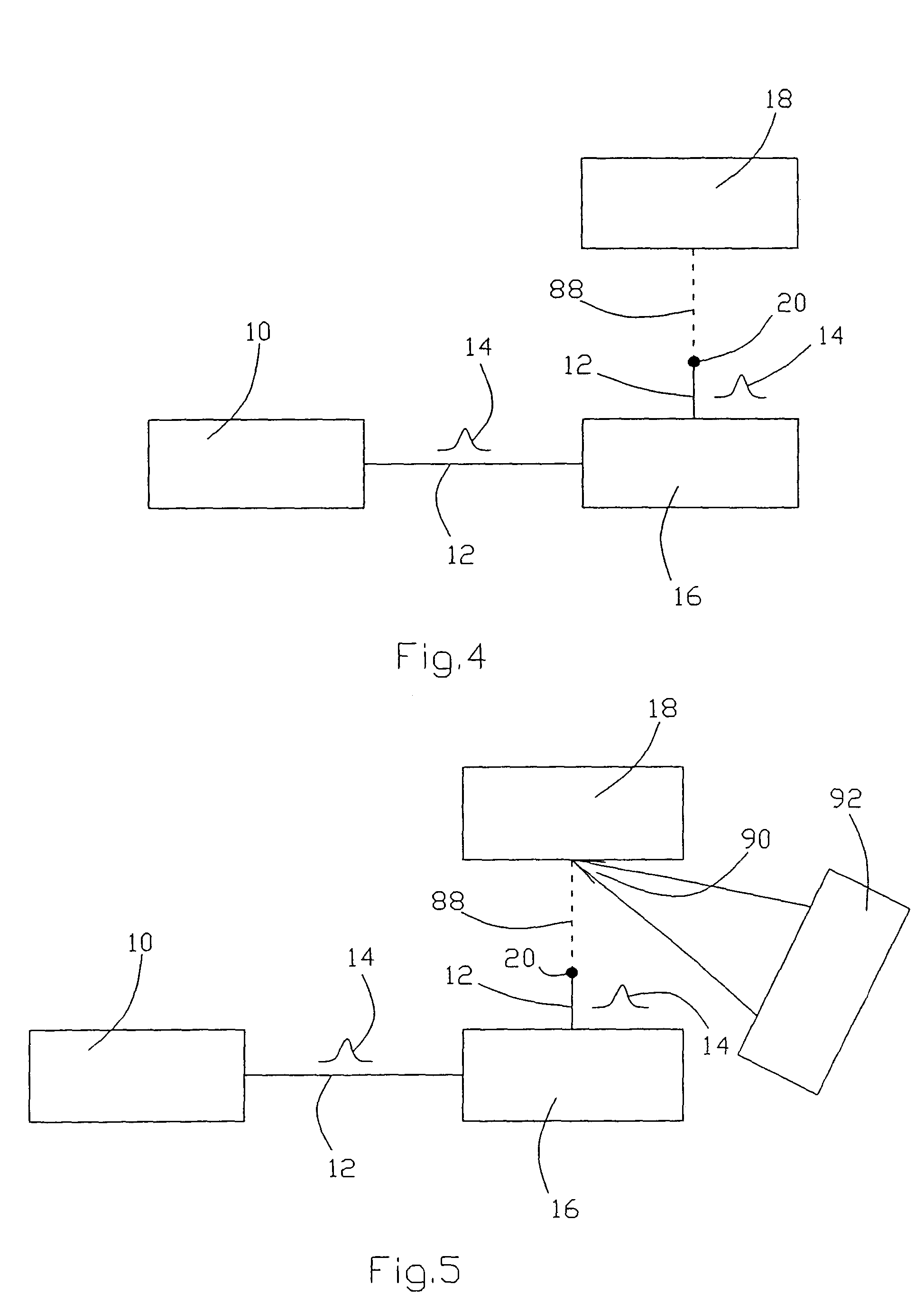Method for material processing and/or material analysis using lasers
a technology of material processing and/or material analysis, which is applied in the direction of metal-working equipment, welding equipment, manufacturing tools, etc., can solve the problems of inability to use lidar systems, inability to process materials, and inability to perform material processing or material analysis of objects of condensed substances, etc., and achieve the effect of effective material processing methods
- Summary
- Abstract
- Description
- Claims
- Application Information
AI Technical Summary
Benefits of technology
Problems solved by technology
Method used
Image
Examples
first embodiment
[0050]With reference to FIG. 10, a method of material analysis of an object is described using a material analyzing device according to FIG. 5. This is a garbage sorting installation. Numeral 98 designate a conveyor belt moving on two rolls 100 and 102. Garbage is loaded onto the conveyor belt 98 at the right end in FIG. 10. The individual garbage pieces are distributed on the conveyor belt. Such individual garbage pieces are schematically shown in FIG. 10 and designated by numerals 104, 106, 108, 110, 112 and 114. The laser beam 12 of the device in FIG. 5, shown only with optical means 18 and the analyzing device 92 in FIG. 10 is directed in such a way that it is directed towards garbage pieces on the conveyor belt 98 in a certain area. Beam deflecting means (not shown) can be provided for deflecting the laser beam 12 in the plane of the conveyor belt 12 to scan the garbage pieces 104, 106, 108, 110, 112 and 114 in a direction perpendicular to the conveying direction. If the indivi...
second embodiment
[0051]Referring to FIG. 11, a method of material analysis of an object is described using a material analyzing device according to FIG. 5. Numeral 116 designates a tank for chemicals with a molten mass 118, the material composition of which shall be analyzed. The system 10, 16 (see FIG. 5) for generating the filament 88 and the analyzing device 92 is flanged to the tank for chemicals 116. The filament 88 excites the molten mass 118 to plasma lightening 90 which is analyzed by the analyzing device 92. The level of the tank for chemicals is not critical because the filament 88 provides the energy required for plasma excitation over a long distance.
third embodiment
[0052]In FIG. 12 a method of material analysis of an object is described using a material analyzing device according to FIG. 5. It is the material analysis of objects in an environment which is difficult to access, such as damaged areas. Numeral 120 designates a burning building. It is the object to analyze the materials in this building, for example to determine whether there is a danger by poisonous gases or not. For this purpose the device shown in FIG. 5 is mounted in a moveable container 122. The container is transported to a position near the building 120. The building 120 can be scanned by the filament 88. The filament 88 excites the material to be investigated to plasma lighting 90, which then is analyzed by the analyzing device 92. Thereby a very quick and safe analysis can be carried out.
PUM
| Property | Measurement | Unit |
|---|---|---|
| exit power | aaaaa | aaaaa |
| diameter | aaaaa | aaaaa |
| distances | aaaaa | aaaaa |
Abstract
Description
Claims
Application Information
 Login to View More
Login to View More - R&D
- Intellectual Property
- Life Sciences
- Materials
- Tech Scout
- Unparalleled Data Quality
- Higher Quality Content
- 60% Fewer Hallucinations
Browse by: Latest US Patents, China's latest patents, Technical Efficacy Thesaurus, Application Domain, Technology Topic, Popular Technical Reports.
© 2025 PatSnap. All rights reserved.Legal|Privacy policy|Modern Slavery Act Transparency Statement|Sitemap|About US| Contact US: help@patsnap.com



